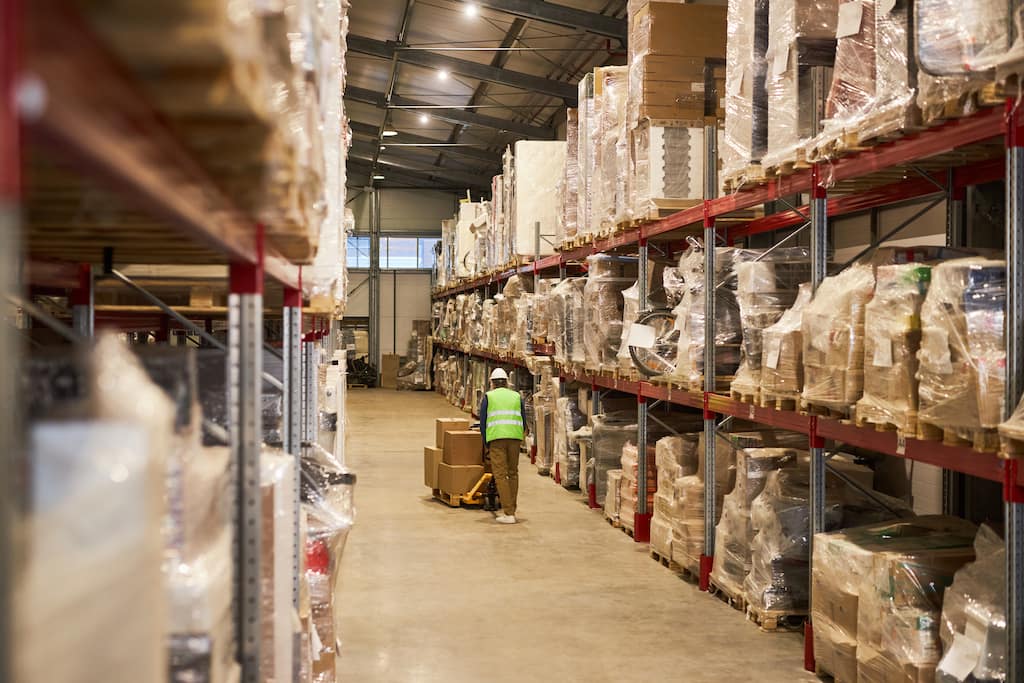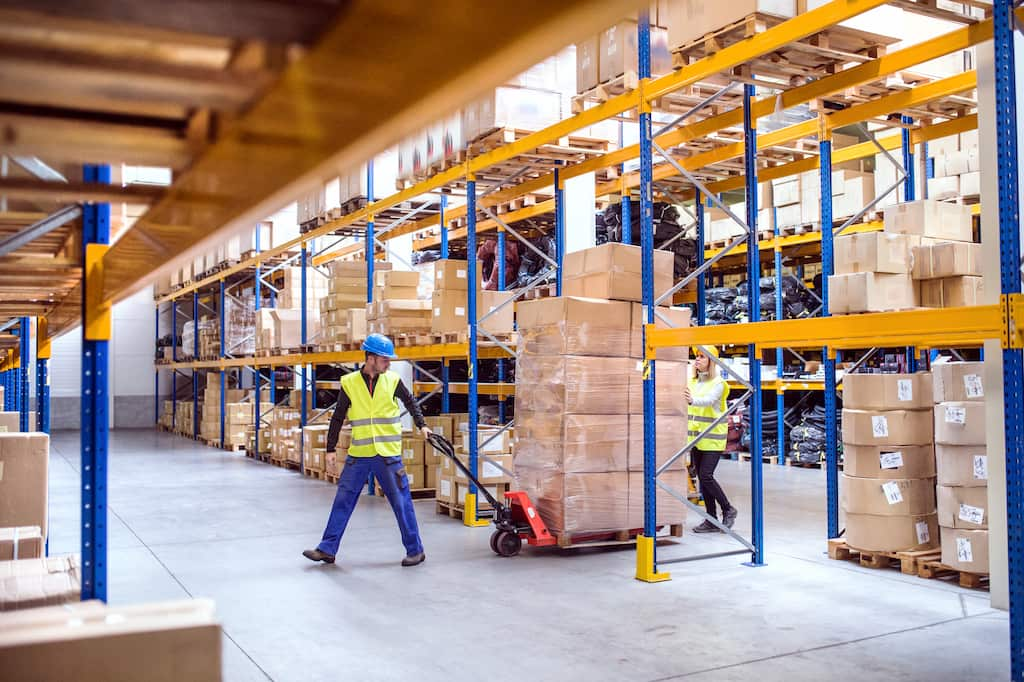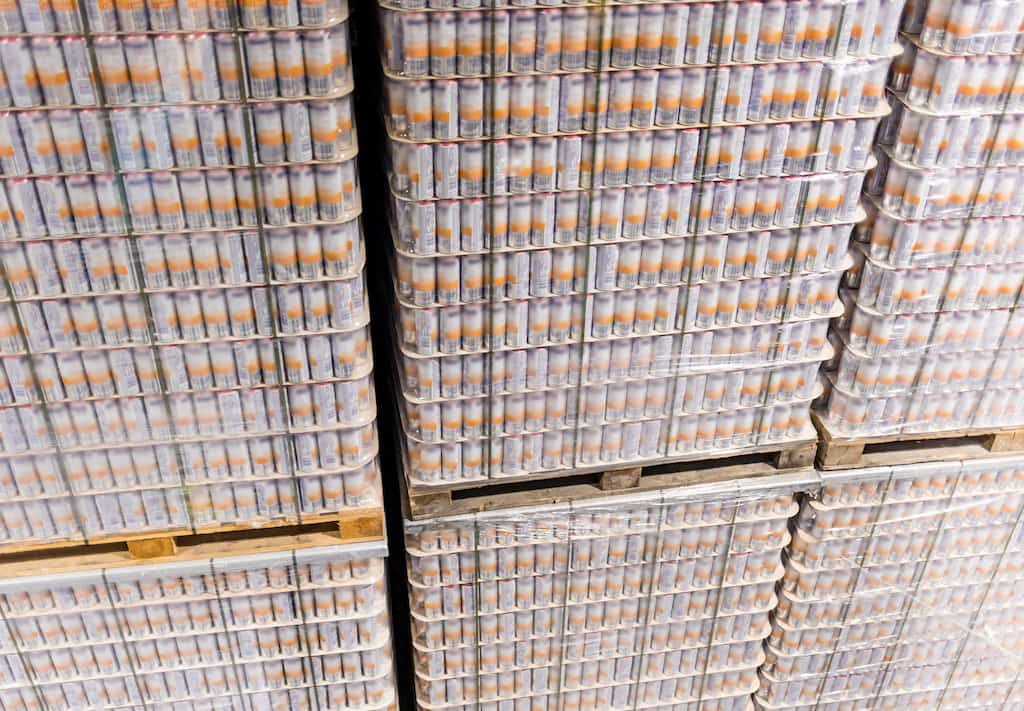
Palletizing is a fundamental component in modern logistics and transportation. By organizing and transporting goods on pallets, efficiency is significantly improved, operating costs are reduced and the risk of product damage is decreased. This practice allows for faster and safer handling of loads, facilitating the optimization of space in both warehouses and transport vehicles.
In this article, we will explore in detail what palletization is and why it is essential for any logistics operation. We will discuss the key benefits of palletizing merchandise, the different types of pallets available and how to select the right pallet for your needs, these and many more tips to maximize efficiency in your logistics operations.
Tabla de contenidos
ToggleWhat does palletizing merchandise mean?

Palletizing is a fundamental method in logistics that consists of organizing and packing goods on pallets, flat and rigid structures designed to facilitate their handling and transport. This process allows products to be grouped in an orderly and safe manner, optimizing storage space and facilitating loading and unloading in both warehouses and transport vehicles.
Historically, palletizing has evolved from more rudimentary methods of transportation and storage to highly efficient modern systems. At the beginning of the 20th century, the use of pallets became widespread in warehouses and distribution centers to improve operational efficiency. Over time, standards and technologies were developed to standardize pallet design and dimensions, allowing for greater compatibility between different logistics systems.
Technological evolution has led to the introduction of plastic pallets and other advanced materials, offering advantages such as greater durability, moisture resistance and light weight. These advances have transformed modern logistics by enabling more efficient cargo handling and integration with automated storage and transportation systems.
Benefits of palletizing merchandise
Palletizing merchandise offers a series of significant benefits that optimize both the storage and transportation of products in the logistics chain. One of the main benefits is the improvement in storage efficiency. By organizing goods on pallets, the available space in warehouses is better used and inventory management is facilitated.
In addition, palletization contributes to reducing loading and unloading times. By having the goods on pallets, the processes of loading into trucks and unloading in warehouses are faster and more efficient. This not only increases productivity, but also enables a constant flow of logistics operations.
Another important benefit is the reduction of damage to merchandise during transportation and handling. By being properly secured on pallets, goods are less exposed to knocks, falls and other incidents that could damage them. This leads to a reduction in costs arising from damaged merchandise and improves customer satisfaction by receiving products in optimal condition.
To get an idea of these benefits in practice, let’s imagine the case of an electronics company that implements palletization in its operations. By using pallets, they are able to store more products in their warehouse, reduce loading times for shipments to distributors and retailers, and minimize claims for products damaged in transit.
Types of pallets and their use
Choosing the right type of palletizing is crucial to optimize logistics efficiency and protect goods during storage and transport. Here are the most common types of pallets and their applications in the industry:
Wooden pallets
Wooden pallets are the most traditional and widely used in the logistics industry due to their availability and relatively low cost. Their advantages include their sturdiness and ability to withstand heavy loads. However, they can be more prone to moisture damage and require treatment to comply with international phytosanitary regulations. They are commonly used in sectors such as food, agriculture and construction.
Plastic pallets
Plastic pallets offer a durable, moisture-resistant alternative. They are lightweight, easy to clean and meet health regulations for transporting food and pharmaceutical products. Although they are more expensive initially, their long lifespan and the possibility of being recycled make them a sustainable option in the long term. They are used in industries such as electronics, chemicals and automotive.
Metal pallets
Metal pallets are ideal for applications requiring extreme strength and durability, such as transporting very heavy loads or hazardous materials. They are resistant to corrosion and offer a long service life, but their weight can be a limiting factor in terms of handling and transportation costs. They are commonly used in the automotive industry, aerospace industry, and in long-term storage environments.
These types of pallets not only affect operational efficiency, but also the safety and handling of the goods. Choosing the right type depends on several factors, including the specific needs of the load, the storage environment, and the logistics requirements.
How to palletize correctly

Proper palletisation is essential to ensure the safety of the load and to optimise space in the warehouse or during transport. We detail the key steps to carry out effective palletisation:
Selecting the right pallet
Choosing the right pallet depends on several factors, such as the type of goods, their weight and size. It is crucial to select pallets that can support the load without compromising the integrity of the product during handling and transport. Wooden, plastic or metal pallets should be chosen based on the specific needs of the load and the logistical conditions.
Palletizing techniques
There are several palletizing techniques, each designed to optimize space and ensure load stability. Common techniques include block palletizing, where boxes are stacked evenly on the pallet; pyramid palletizing, which forms a stable pyramid of boxes; and mixed palletizing, which combines different types of products on a single pallet.
The choice of the appropriate technique depends on the type of goods and the method of transport.
Insuring and packaging
Once the goods have been palletized, it is crucial to secure them properly to prevent movement during transport. The use of stretch wrap, straps and other packaging materials provides an additional layer of protection and stability to the pallet.
Stretch wrap is ideal for wrapping cargo securely and protecting it from dirt, moisture and damage during handling. Straps and other securing materials ensure that boxes remain firmly attached to the pallet during transport, minimising the risk of falling or damage.
These practices not only improve operational efficiency, but also contribute significantly to cargo security and the optimization of warehouse and transport space.
Tools and equipment for palletizing

In order to carry out effective and efficient palletizing, it is crucial to have the right tools and equipment to facilitate the handling and securing of the load. We describe the main tools and equipment used in the palletizing process, as well as the recent technological innovations that are transforming this logistics practice.
Common Equipment
Forklifts: These are essential for moving and lifting heavy pallets. These machines facilitate the loading and unloading of goods safely and efficiently, reducing the risk of injury and optimising handling times in warehouses and distribution centres.
Pallet trucks: Also known as hydraulic pallet trucks, they are ideal for moving pallets on flat surfaces. They allow goods to be transported quickly and safely within a warehouse, facilitating loading and unloading in small spaces.
Pallet Wrappers: These machines apply stretch film around pallets to effectively secure the load. Stretch film protects the goods from dirt, moisture and damage during transport, ensuring safe delivery to the final destination.
Technological innovations in palletizing
Technology continues to transform the palletizing process with significant advancements that improve efficiency and accuracy:
Automated palletizing systems: They use robots and automated systems to efficiently stack and organize pallets, reducing operating costs and increasing productivity.
Automatic weighing and labelling systems: They integrate automatic scales and labellers into the palletising process, allowing for accurate identification and recording of load weight and automated application of labels.
RFID and IoT Technology: Radio Frequency Identification (RFID) and the Internet of Things (IoT) enable pallets and merchandise to be tracked and monitored in real time throughout the supply chain, improving visibility and logistics management.
These tools and technologies not only optimize palletizing processes, but also contribute to safety, precision and efficiency in warehouse management and goods transportation.
Palletizing regulations and standards
Palletizing, as a crucial part of modern logistics, is subject to various international regulations and standards that ensure safety and efficiency in the handling of goods. These regulations are essential to guarantee safe operations and meet the demands of the global market.
International rules and regulations: Specific regulations are set by organisations such as the International Organisation for Standardisation (ISO) and the European Pallet Association (EPAL), which establish standards for pallet dimensions, materials and handling methods. These standards ensure compatibility in the global supply chain, optimising storage and transport processes.
Necessary certifications: Companies that operate in international trade must ensure that they comply with certifications such as ISO 8611 for wooden pallets and ISPM 15, which regulates the phytosanitary treatment of wooden pallets used in international transport. These certifications guarantee that the pallets comply with quality, safety and environmental sustainability standards, being essential to avoid customs delays and logistical problems.
In addition to these regulations, it is important for companies to stay up to date with regulatory changes and seek expert advice to ensure continued compliance and optimization of their logistics operations.
Palletizing Tips and Best Practices
Here are some key tips to maximize efficiency in the palletizing process, as well as common mistakes to avoid:
Tips to maximize efficiency
To optimize the palletizing process and improve logistics management, consider implementing the following practices:
- Pallet standardization: Use pallets of standard dimensions and quality appropriate for your type of merchandise. This makes handling and storage easier.
- Warehouse Organization: Design a storage system that facilitates access and management of pallets, ensuring that the most commonly used ones are easily accessible.
- Capacitación del personal: Proporciona formación adecuada a tu equipo sobre técnicas de paletización, manejo de equipos y normativas de seguridad.
- Efficient use of space: Make the most of the space in your warehouse by organizing pallets efficiently and using appropriate shelving.
Common mistakes to avoid
Avoid the following mistakes that can negatively affect efficiency and safety in the palletizing process:
- Pallet overload: Do not exceed the maximum recommended weight or dimensions for pallets, as this can cause damage to the goods and increase the risk of accidents.
- Lack of Inspection: Do not neglect to regularly inspect pallets before use to ensure they are in proper and safe condition.
- Improper storage: Avoid disorganized storage or lack of pallet rotation, which can make access to goods difficult and increase loading and unloading times.
Implementing these practices and avoiding these mistakes can significantly contribute to operational efficiency and safety in your palletizing logistics operation.
Conclusions
In short, palletisation is crucial to optimising storage and transport logistics, improving organisation, safety and efficiency in the handling of goods. This leads to a reduction in operating costs and handling times, as well as positively influencing productivity and customer satisfaction.
The correct selection of pallets and palletizing techniques is key to achieving these benefits, ensuring a more efficient workflow and a more effective supply chain.
Interested in improving the efficiency of your logistics with effective palletizing? Contact TPLogistics for personalized advice and specialized services and learn more about how we can optimize your storage and transportation operations.


